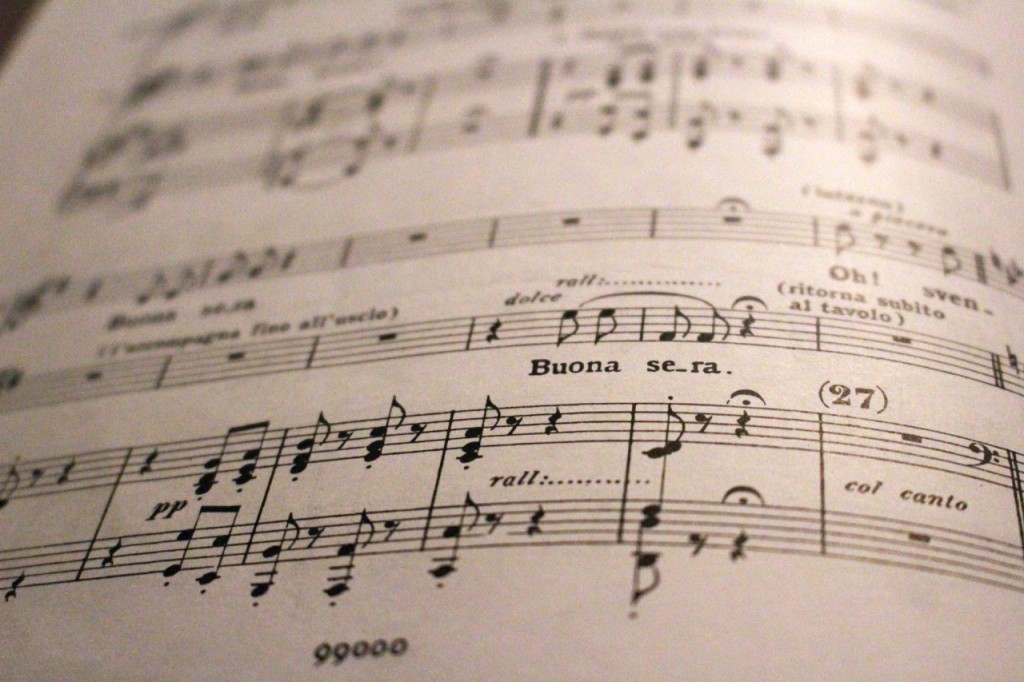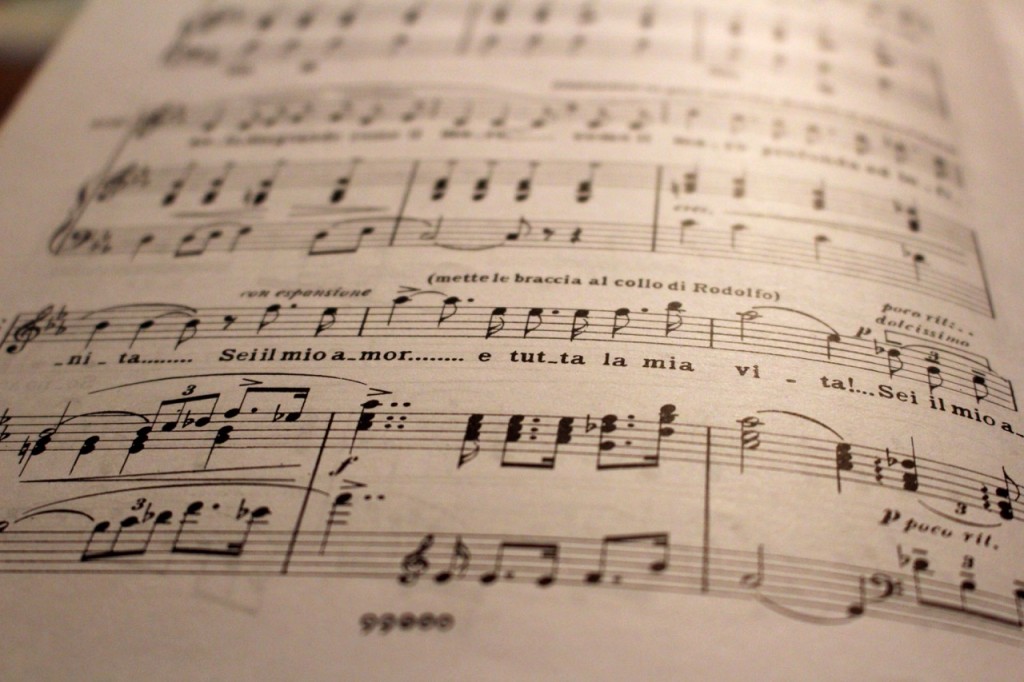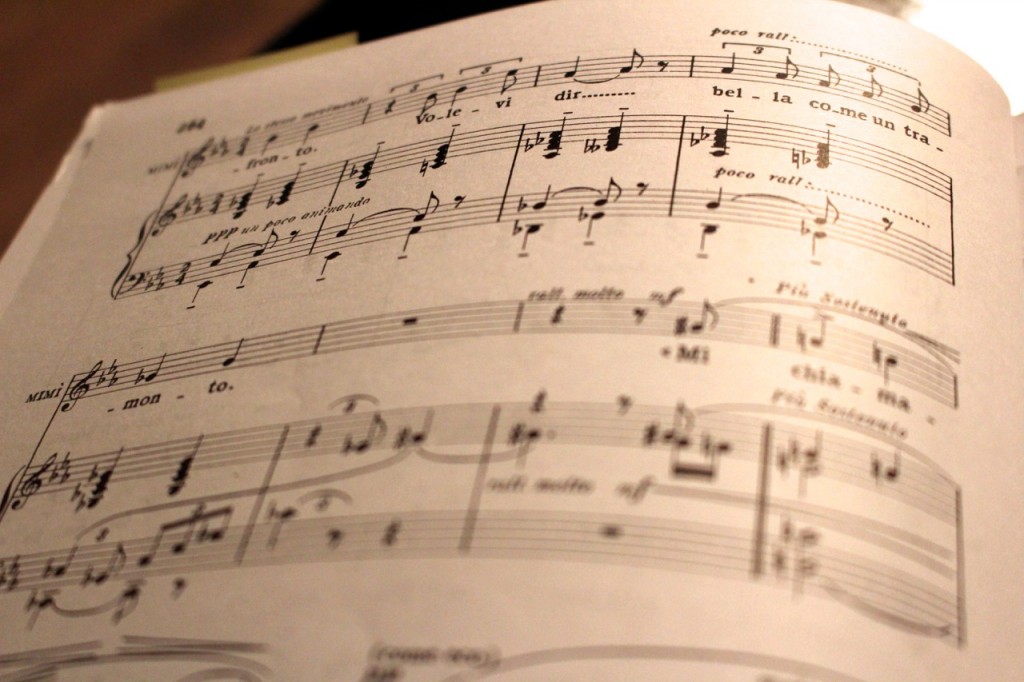
Tales from the score: Bohemians in love
HumourWithout fail, in almost tedious constancy, watching La bohème brings out all the feels. Before an upcoming production, I’m more objective, and I can inwardly roll my eyes at the thought of getting swept away by a piece like La bohème. It’s so obvious, I tell myself, You’re falling for low-bar emotional jabs like doomed lovers and friendship despite hardship. But then, you know, I go and see it, and there I am, swept away once again. La bohème is a piece that keeps giving as you get to know it better. The tragedy can be found beyond the clear moments created by Puccini, Illica and Giacosa. There exists tragedy too in the small details about the relationship between the Bohemians themselves. For example:
Exhibit A:

This is early in that famous scene where Mimì and Rodolfo meet for the first time. She knocked on his door with a spent candle, asking for help re-lighting it. Rodolfo offers Mimì his candle, there are sparks between them, and she controls herself enough to say, “goodnight”. The above is his echoing reply. Look at that line of music, at just how; Italian it is. Mimì was polite with her “goodnight”, using the proper inflection and keeping the conversation friendly and neutral; musically, the scene could end right there. Instead, Rodolfo’s “goodnight” comes dense with meaning. The staccato chords floating around this moment in the scene are the raise of an eyebrow, Rodolfo’s amusement and interest in his pretty neighbour. Right when he voices his reply, Puccini slows everything down, and adds a sweeping slur over the words. The pitches themselves, the falling seventh, are hopelessly incomplete; the musical phrase is begging to be continued, kind of like Rodolfo’s conversation with Mimì. Rodolfo’s subtext is, roughly, “Yeah, you go ahead and pretend you want to leave. I know you’ll be back.” So Italian
Exhibit B:

Fast-forward a few acts, and Mimì is dying from her illness; she comes back to Rodolfo’s apartment to say goodbye. After the flurry of making Mimì comfortable, their friends leave them alone, and those awful brass chords start. You can see them, blurred, at the top of this photo, beating away at my heart. The whole scene is incredible, and the bottom line of this photo is usually the first moment I start to weep against all reason. Mimì sings this bit to Rodolfo, saying, “You are my love, and my whole life!” What a thing to say to anyone, at any time, let alone at the end of one’s life. Puccini gets it, too; as Mimì sings this touching line, the strings and the voice soar out of the tragic chords, and give us unashamed satisfaction. The harmonies are simple and consonant, the vocal writing puts the soprano in a sweet spot, and it’s like artistic alchemy. It’s as if Mimì throws away any inhibitions in order to tell Rodolfo how she feels before she dies; no protecting her feelings, no coy games, just her heart.
Exhibit C:

Just one page after the above moment of sad catharsis is this final gem. If you weren’t moved by those chords or Puccini’s guilty-pleasure melodies, maybe Illica and Giacosa can try their hand. Mimì breaks the tension by asking Rodolfo, “Am I still pretty?” He replies, “Beautiful like a sunrise.” And then, she makes a joking dig at Rodolfo, a little play on words with the poet: “You made the wrong comparison. You should have said, ‘beautiful like a sunset’.” I know! Every time I translate it, I can see that it’s cheesy. But Puccini seals the deal with the music underneath all of this; he brings back all the musical themes from Mimì and Rodolfo’s first meeting, to add nostalgia to the pot of emotions. Right after the line about the sunset, Mimì sings a bar of her familiar theme, “Mi chiamano Mimì” with plenty of new meaning. At this moment in the score, Puccini has kept the death-tolling brass chords going underneath the musical references to Act I. When the melodies bring back happy memories, but the accompanying chords mean impending tragedy, you’ve got an audience moved.
Watch my favourite version of La bohème, with Kleiber, Pavarotti and Cotrubas at La Scala in 1979:

Comments